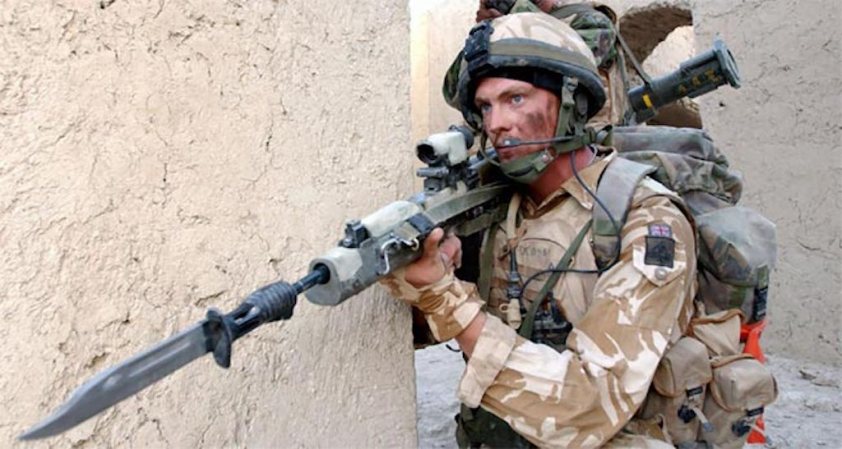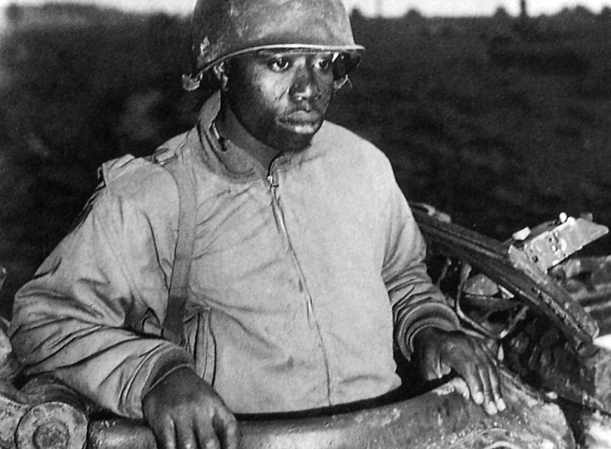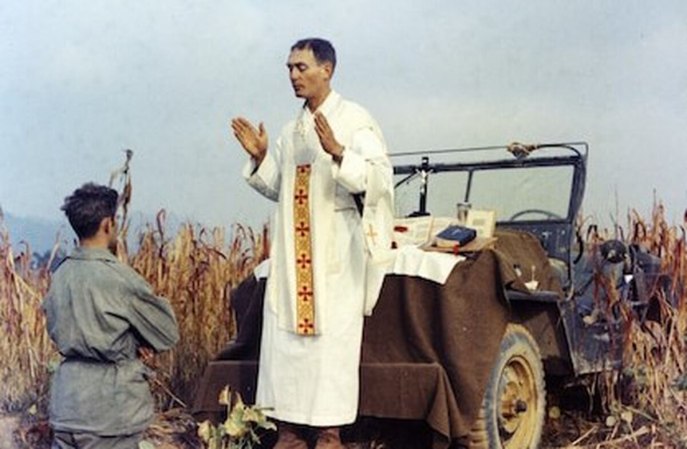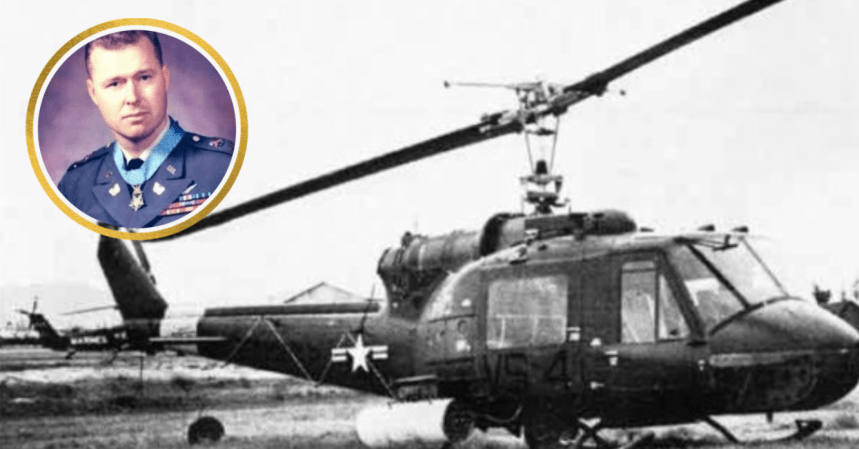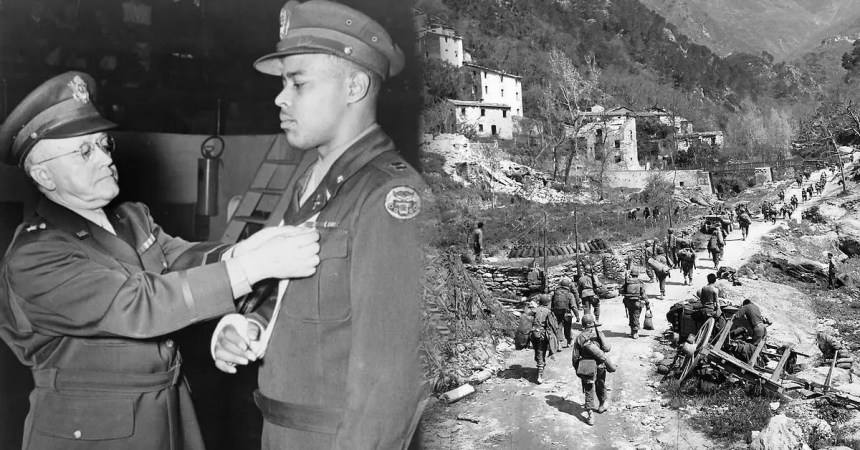In the wars since Sept. 11, 2001, there have been sixteen Medals of Honor conferred, but ask any military member and they’ll likely bring up some other heroes who deserved the nation’s highest award but didn’t receive it.
Whether it be the chaos of battle, lack of witnesses, or that they were not recommended for the Medal of Honor although they almost certainly should have been, some troops never got the recognition they really deserved.
As articles in The Washington Post and Army Times have pointed out, the standards for military awards are rather inconsistent. The muddled process of which actions earn the nation’s highest award has resulted in a generation of “forgotten heroes” in the War on Terror, as I wrote previously at Business Insider.
Here are seven of those heroes who arguably should have received the Medal of Honor.
1. Marine Pfc. Christopher Adlesberger cleared part of an insurgent-filled house in Fallujah all by himself.

During the second battle of Fallujah, then-Marine Pfc. Christopher Adlesperger singlehandedly cleared part of a house filled with insurgents in a heroic action that was recommended for the nation’s highest military award.
Upon entering an insurgent-infested house in Fallujah on Nov. 10, 2004, Adlesperger pushed forward despite the death of his point man and the wounding of two others. Adlesperger, wounded in the face by grenade fragments, then single-handedly cleared a stairway and a rooftop, throwing grenades and shooting at insurgents while under blistering fire.
“Adlesperger was killing insurgents so they couldn’t make it up the roof,” said platoon corpsman Alonso Rogero, in his written statement of events. “The insurgents tried to run up the ladder well, but Pfc. Adlesperger kept shooting them and throwing grenades on top of them.”
From Defense.gov:
Finally, an assault vehicle broke through a wall on the main floor. Adlesperger rejoined his platoon and demanded to take point for the final attack on the entrenched machine gun. He entered the courtyard first, and eliminated the final enemy at close range. By the end of the battle, Adlesperger was credited with having killed at least 11 insurgents.
He died a month after his heroics in that Fallujah house, but Adlesperger was posthumously promoted to lance corporal and recommended for the Medal of Honor. The award recommendation from 3rd Battalion, 5th Marines originated with 1st Lt. Dong Yi and moved up the chain of command, with concurrence from Adlesperger’s battalion commander, regimental commander, and division commander.
Two years later, when his recommendation reached the MEF Commander, Lt. Gen. John Sattler, it was downgraded to the Navy Cross, the nation’s second highest award. His award recommendation did not include any comments or reasons as to why. He was awarded the Navy Cross on April 13, 2007.
2. Army Master Sgt. Thomas Ballard led a 12-man team of soldiers against an overwhelming enemy force. Three hours later, more than 265 insurgents would be dead.

After receiving a call for support from Iraqi Army soldiers being attacked by insurgents on Jan. 28, 2007, a small team of soldiers with Master Sgt. Thomas Ballard — believing the enemy strength was only around 15 to 20 militants — went out to help them.
As they neared the beleaguered Iraqis, an AH-64 Apache helicopter providing air cover crashed. “When I saw the Apache go down, it immediately changed everything,” Ballard, the non-commissioned officer in charge of Military Transition Team 0810, told Army Public Affairs. “Everything was focused on that crash site; nothing else mattered. That’s where we had to go and that’s what we did.”
Once they got to the crash site, the soldiers quickly realized the insurgent force was much larger than 20. The vehicle of Ballard’s commander started getting slammed by machine-gun and RPG fire and a major firefight broke out.
“We began engaging, and continued engaging. There were 265 bodies reported at the end, but I can tell you, there was more than that,” Ballard told Army Public Affairs. “Everything we shot was targets and collectively, we burned up about 11,000 rounds of machine gun ammo, M4 ammo, M203 grenade launcher ammo and 10 air strikes.”
The team of 12 soldiers had apparently fought nearly 1,000 insurgents, according to Ballard. The entire team received the Army Commendation Medal and two others received the Bronze Star. Ballard was awarded the Silver Star.
3. Air Force Staff Sgt. Robert Gutierrez kept calling in crucial air strikes on enemy positions, even after he was shot in the chest and believed he would die in minutes.

As the lone combat controller assigned to an Army Special Forces team, Air Force Staff Sgt. Robert Gutierrez brought critical skills of directing accurate air strikes on enemy positions in past battles. On Oct. 5, 2009 while on a mission to find a high-value target in Afghanistan, those skills would be put to the test again — this time while he was seriously wounded.
The team was ambushed, and after a fellow soldier’s weapon had jammed, Gutierrez began firing at enemy fighters until he was struck in the upper chest. The enemy bullet just missed his heart, collapsed his lung and he began to cough up blood, according to Fox News.
“I thought about [my job], what I would do before I bled out,” Gutierrez later told Fox News. “That I would change the world in those three minutes, I’d do everything I could to get my guys out safely before I died.”
Ignoring his injuries and refusing to take off his body armor, Gutierrez remained calm and stayed on the radio to call in gun runs. Enemy fighters were lined up on a wall just 30 feet from him at one point in the battle, but the staff sergeant called in three A-10 strikes at “danger close” range to take them out.
As Robert Johnson wrote at Business Insider:
The A-10 pilot talking to him on the ground said he had no idea Gutierrez was wounded, that his voice was calm the whole time, and only realized the man was injured when his team moved to the medical landing zone.
“He said he would be off of the mic for a few to handle his gunshot wounds,” Air Force Capt. Ethan Sabin said. “Until that point he was calm, cool and collected.”
After losing nearly half his blood, Gutierrez was medically evacuated from the battlefield after four hours of fighting. He received the Air Force Cross for his heroism in 2011.
4. Marine Cpl. Brady Gustafson kept directing heavy fire on insurgents despite an RPG partially amputating his leg.

On July 21, 2008 while manning the turret atop an MRAP in Afghanistan, Lance Cpl. Brady Gustafson continued to engage enemy fighters despite a devastating wound to his right leg.
Ambushed from multiple directions with rocket-propelled grenades and machine-guns, Gustafson’s vehicle took a hit from an RPG that partially severed his leg and knocked his driver unconscious, according to The Washington Post’s Dan Lamothe.
“I looked down, and a lot of my right leg wasn’t there,” he told Time Magazine. “I could see muscle and bone, and I was bleeding pretty hard.” Still, he remained calm and unleashed hell from his machine-gun.
The North-Shore Journal has more:
Despite his injuries, Gustafson remained vigilant on his M240B machine gun, locating and accurately firing on several insurgent positions, some as close as 20 meters from the vehicle.
He remained in the turret, reloading twice and firing over 600 rounds, while Lance Cpl. Cody Comstock, an Anderson, Ind. native, applied a tourniquet to his leg.
Gustafson was recommended for the Silver Star and ended up receiving the Navy Cross in 2009. But his battalion commander, Col. Richard Hall, later told The Marine Times that he regretted not putting him up for the nation’s highest award.
“When you consider that his leg is taken off, his driver is unconscious and he’s shouting to his driver to get him out of the kill zone. Meanwhile, he’s maintaining the presence of mind to keep returning fire on the enemy and to try to suppress them overwhelming that four-vehicle convoy, or patrol,” Hall told the paper. “The vehicle behind them was stuck, and Gustafson reloads no less than two times and wakes up his driver, tells him to push the burning vehicle behind them out of the kill zone, all while bleeding out and refusing medical aid for his severed leg.”
5. Sgt. 1st Class Alwyn Cashe pulled six soldiers from a burning Bradley fighting vehicle even though he was drenched in fuel.

Following a devastating improvised explosive device strike under his Bradley Fighting Vehicle in Daliaya, Iraq on Oct. 17, 2005, Sgt. 1st Class Alwyn Cashe managed to escape from the burning vehicle, out of his spot in the gunner’s hatch.
Then he went back in under enemy fire to save his fellow soldiers three times, all while he was drenched in fuel.
From The Los Angeles Times:
Cashe rescued six badly burned soldiers while under enemy small-arms fire. His own uniform caught fire, engulfing him in flames. Even with second- and-third degree burns over three-fourths of his body, Cashe continue to pull soldiers out of a vehicle set ablaze when a roadside bomb ruptured a fuel tank.
“I told him, ‘Don’t go over there playing a hero. You learn how to duck and come home,”‘ his sister, Kasinal Cashe White told the Orlando Sentinel. “He said, ‘I’m doing the job I was trained to do. I have to take care of my boys.”‘
Cashe held on until Nov. 8, when he succumbed to his wounds at Brooke Army Medical Center in Texas. According to his sister Kasinal, who spoke with the Los Angeles Times, his first words when he was able to speak at the hospital were “how are my boys?”
The full extent of Cashe’s heroism became muddled in the chaos of war, and the soldiers he rescued were unable to provide details since they were hospitalized with severe wounds, The Times reported. He was recommended for, and posthumously received the Silver Star for his incredible bravery.
But many have advocated for Cashe to receive the nation’s highest award, including his former battalion commander.
“You don’t often find truly selfless sacrifice where someone put his soldiers’ welfare before his own,” Brig. Gen. Gary Brito told The Los Angeles Times. “Sgt. Cashe was horribly wounded and continued to fight to save his men.”
6. After being ambushed, 1st Lt. Brian Chontosh ordered his driver towards an enemy trench-line. Then he cleared much of it himself using his own weapons — and the enemy’s.

As a platoon leader in the opening stages of Operation Iraqi Freedom on March 25, 2003, then-1st Lt. Brian Chontosh was ambushed and couldn’t escape the kill zone. So he ordered his driver to move right into the Iraqi trench-line as the turret gunner laid down fire with the .50 cal.
Corey Adwar writes at Task Purpose:
It was the first major firefight of the war for the anti-armor platoon Chontosh led, belonging to Weapons Company, 3rd Battalion, 5th Marines, 1st Marine Division. Moments after the ambush began, Iraqi troops had already hit two vehicles with machine-gun, rocket-propelled grenade, and mortar fire, killing one soldier and severely wounding another.
Once his Humvee reached the enemy position, “Tosh” (as he calls himself) got out of the vehicle and jumped into the trench, mowing down enemy soldiers with his rifle until he ran out of ammo.
“I shot my pistol dry twice,” then grabbed an AK off a dead Iraqi, shot every bullet in it, picked up another AK and emptied it, too. “It’s just crazy,” he recalled to Phil Zabriskie for his book “The Kill Switch.”
When it was all over, Chontosh had cleared 200 meters of the enemy trench, killed more than 20 enemy soldiers, and wounded several others. He had used up all of his rifle and pistol ammo, along with two enemy AK-47s, and an RPG.
He was awarded the Navy Cross for his actions, but he didn’t want to take all the credit, and instead commended the Marines with him that day for saving his life.
“They saved my life, multiple times that day, during the ambush,” Chontosh told Stars and Stripes. “That’s all them. If it wasn’t for them, I would be the lieutenant who would be reported as … a case of what not to do.”
7. Despite heavy enemy fire, Cpl. Jeremiah Workman ran into a house multiple times to save Marines who were trapped inside.

On Dec. 23, 2004, Cpl. Jeremiah Workman was leading one squad of Marines while his friend Sgt. Jarrett Kraft had another. Searching houses in Fallujah, Kraft took the left side of the street while Workman took the right.
On the third house they entered that day, Kraft’s squad came under heavy fire on the second floor. Workman immediately rallied his squad to rescue his fellow Marines.
“I was scared,” Workman told The Washington Post. “I really was … when you get caught in a situation like that, it’s a real man check. For two seconds, you have to look in that invisible mirror that’s not there and look at yourself and question yourself as a man. And say, ‘Okay, I’m a corporal in the Marine Corps and I have guys that are looking up to me for leadership. What am I going to do?’ … So I grabbed everybody in the house and we come running.”
The Marine Times has more:
Dreading the worst, Workman organized his squad to enter the building. A corporal at the time, he and his Marines faced a maelstrom of small-arms fire and grenades. Three times, he sprinted up a stairwell under fire to fight the insurgents and help the pinned down Marines, who eventually escaped through the roof. At times, the Marines were close enough to see the insurgents’ faces amid the smoke and flashes of gunfire.
Two Marines — Cpl. Raleigh Smith and Lance Cpl. James Phillips, both 21 — were mortally wounded in the house, while several others were hurt but survived. Lance Cpl. Eric Hillenburg, 21, was killed nearby, cut down by enemy sniper fire as he and his fire team raced to the house to help. Workman sustained multiple shrapnel wounds from grenade explosions, but escaped without being seriously hurt.
Workman and his fellow squad leader Kraft were awarded the Navy Cross for their actions that day. Workman’s citation credited him with the “elimination of 24 insurgents.”
“I accepted this medal for three guys who didn’t make it back,” Workman told The Post. “So it’s really theirs.”
8. Sgt. Maj. Brad Kasal took 43 pieces of shrapnel while shielding another Marine from a grenade blast.

On Nov. 13, 2004 while serving in Fallujah as the company first sergeant for Weapons Co., 3rd Battalion, 1st Marines, Brad Kasal joined up with a squad entering a house to rescue Marines inside.
Soon after he found a wounded Marine inside, Kasal and another Marine were both severely wounded in the legs by enemy fire. Then the insurgents threw grenades at them. The bleeding first sergeant rolled on top of the wounded Marine with him and absorbed the shrapnel.
Kasal took 43 pieces of shrapnel and was shot seven times inside the “House of Hell.” He lost roughly 60 percent of his blood, according to an article in VFW Magazine.
“When First Sergeant Kasal was offered medical attention and extraction, he refused until the other Marines were given medical attention. Although severely wounded himself, he shouted encouragement to his fellow Marines as they continued to clear the structure,” reads his citation. He was awarded the Navy Cross.
As Kasal was carried out of the house by two of his Marines — covered in blood and still clutching his pistol — Lucian Reed captured the scene, in what was perhaps one of the most iconic photographs to come out of the Battle of Fallujah.









